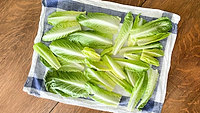ARS Research Brief Highlights E. coli Seasonality, Traceability
.png?1661887788)
Credit: U.S. Department of Agriculture Food Safety and Inspection Service
The U.S. Department of Agriculture’s Agricultural Research Service (USDA’s ARS) recently published a Research Brief that highlights two food safety studies published in 2022. The first study relates to the traceability of Shiga toxin-producing Escherichia coli O157:H7 (STEC), and the second study discusses the autumn seasonal affects connected to STEC in bagged romaine lettuce.
In the first study, ARS scientists observed a population of 181 STEC strains over a period of 23 years at a at U.S. Meat Animal Research Center closed-system feedlot. The 181 strains collected in the study were subjected to whole genome sequencing (WGS). The study’s findings suggest that diverse subpopulations of STEC can coexist in the same ecological niche, and that strains may be persistent for a long period of time within the same feedlot. Four distinct clades (groups) of the pathogen were observed, which shared a portion of their genetic composition while also containing unique, ‘mobile’ elements. Interpretation of mobile elements during an outbreak investigation may help reveal relationships between human and environmental STEC isolates.
The second study used WGS to investigate the bacterial microbiome and STEC colonization of fresh-cut lettuce in an effort to better understand the storage and seasonality factors that may contribute to STEC outbreaks from bagged romaine lettuce. According to ARS, between 1998 and 2019, 36 outbreaks that traced back to lettuce were recorded, most of which occurred in autumn and winter in California and Arizona, the largest lettuce-producing states in the U.S. Notably, the study found that STEC survived 5.6 times better in cold-stored packaged romaine that was harvested in autumn as opposed to the spring. Deterioration was also more rapid for lettuce harvested in autumn rather than spring.
ARS Research Briefs are published biannually. Visit USDA’s website to subscribe.
Looking for a reprint of this article?
From high-res PDFs to custom plaques, order your copy today!





